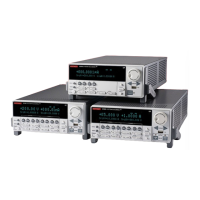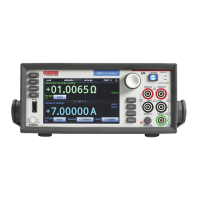9-6 System Expansion (TSP-Link) Series 2600 System SourceMeters Reference Manual
2600S-901-01 Rev. A / May 2006 Return to Section 9 topics
Using the expanded system
Accessing nodes
A TSP-Link reset creates the node table. Each unit in the system corresponds to
an entry in this table, indexed by the unit's node number. The
node[N] variable
(where
N is the node number) is used to access any node in the system. For
example, Node 1 is represented in the
node table as entry node[1].
Each of these entries is, in turn, a table, holding all of the logical instruments (and
associated ICL commands) shared by the corresponding unit (see “
Logical instru-
ments” in Section 12 for more details). SMU A on Node 1, therefore, could be
accessed as node[1].smua.
The localnode variable is an alias for node[N], where N is the node number of
the Master. For example, if Node 1 is the Master,
localnode can be used instead
of
node[1].
Programming examples – The following examples show how to access
instruments in the TSP-Link system shown in
Figure 9-1:
• Any of the following three commands can be used to reset SMU A of Node
1 (which, in this example, is the Master). The other nodes in the system are
not affected.
smua.reset()
localnode.smua.reset()
node[1].smua.reset()
• The following command will reset SMU A of Node 4, which is a Slave. The
other nodes are not affected.
node[4].smua.reset()
NOTE For remote programming, scripts that reside on
Slave nodes are not accessible.
